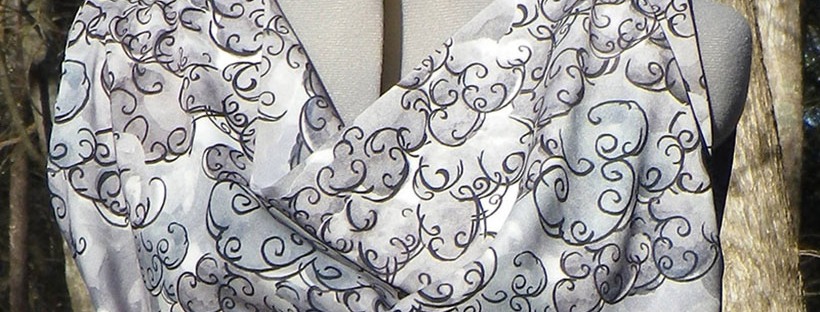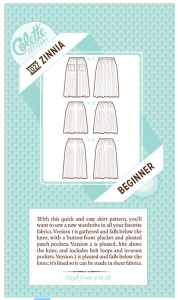I mentioned my involvement in the new Spoonflower project called Sprout Patterns before, but to repeat myself: there is an amazing new thing out there called Sprout Patterns and you really really must go check it out. The idea is that Spoonflower will actually print the pattern for various garments and projects directly on the fabric for you, filled in with your chosen design. They’ve partnered with a whole bunch of indy pattern makers to bring you a really diverse and excellent set of options. In addition, you can actually see your project before you buy it, projected in 3D in your browser. You can even shift the pattern around if you care about design placement, and they’re working on allowing design rotation so that you can accurately place border prints. Its so cool. This is what my dress looked like when I built it in sprout patterns.

The bit on the left is literally what your printed fabric will arrive looking like, with obvious cut lines, labels, et al. I find the sense of scale invaluable when trying to judge how a various project will look with a spoonflower fabric design. Not to mention, the bit where you have to print out a pattern, tape endless sheets of paper together, tediously cut out all the bits and only THEN start playing with your fabric is completely removed when you use Sprout Patterns for your project. I cut out the pieces for this dress while sitting on my couch watch tv. I just followed the lines on the fabric. And it turned out fantastic, if I do say so myself.
I actually designed the fabric for this project as well. I’m one of those people who actually really love thunderstorms, cloudy days, even sometimes just the steady drum of of a rainy wet day. You know, when I can sit inside, warm and dry with a book and just watch it. So awhile ago, I designed myself a set of curtains with watercolor and ink pen clouds, pouring forth a stream of words, all quotes about rain. When the sun is too bright and sharp and loud, I can pull the curtains closed and it all gets softer.
I re-used the cloud elements to create a fully repeating cloudy day fabric design. If you like it, you can buy it yourself on spoonflower in
small scale like my dress below, and
large scale.
The pattern for this dress is the Colette Myrtle, and it was perfect for this project. The fit is very relaxed, obviously, without a whole lot of pieces, or a need for exact fitting. Considering the steps that sprout takes out, it was also very very very fast to put together. I even did french seams on the side of the skirt! The fabric is Spoonflower’s poly crepe de chine, which is still one of my favorites. Light, flowy, slightly textured, super easy to sew.
I reviewed this pattern here: Colette Myrtle ★★★★★
Also as promised, more pictures of myself, wearing my creations. This one is definitely a crowd pleaser, a winner, and something I actually get to wear frequently.







































 The colette dahlia was quite easy, and is definitely a true beginner pattern. The way you use bias tape to create the straps is quite clever, and will definitely help anyone who has a fear of inset sleeves (as I definitely first did).
The colette dahlia was quite easy, and is definitely a true beginner pattern. The way you use bias tape to create the straps is quite clever, and will definitely help anyone who has a fear of inset sleeves (as I definitely first did).




